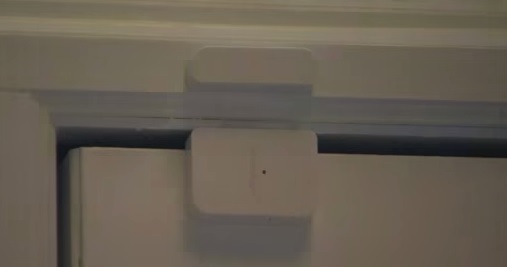Table of Content
Ring also has highly-rated wireless security devicesincluding outdoor cameras, floodlights, yard lights and doorbell cameras. If you’re installing DIY home security systems with cameras, select a location that provides the best view of your home. A do-it-yourself home security system is a great option for those who don’t want to hardwire a system into their home. DIY alarm systems are also great for tech-savvy individuals who want the freedom and flexibility to custom-build a monitoring system.

We've tested out tons of different setups and rounded up the best DIY home security systems on the market right now below. Take control of your home security with these easily installed DIY systems. It’s an incredible wireless camera that works hand in hand with our award-winning security system to keep your family safe - whether your home or away. So you get real protection — from your front lawn to your backyard. To get yourselves protected from burglaries, you need to buy home security Products from a reliable store online or offline.
Member Support
Abode offers two wireless home security systems and allows customers to build their own security packages. Iota All-In-One and Smart Security Kits connect over Wi-Fi to devices like door sensors, motion detectors, cameras, and more. Both systems come with a 93-decibel siren and you can purchase professional installation if needed. Because there are no preexisting packages, equipment costs vary, and Cove monitoring ranges between $15 and $25 per month. Each Cove customer receives access to self-monitoring and professional monitoring plans, as well as access to Cove InstaText. This is a mobile app that uses a three-step communication process to fight against false alarms but maintain fast response times.

The company does offer security cameras such as the YI Kami for outdoor use, as well as the YI Indoor Camera. You can also integrate third-party security cameras into the system. We also found Alder’s emphasis on medical emergencies on its website a great feature for those concerned about medical alerts. A DIY security system can cost $60 to $400 or more depending on the brand and model you buy and where you purchase it.
Pros and Cons of Alder Home Security
Read on to find out all you need to know about buying and installing a DIY home security system. The Ring Alarm Pro is a DIY smart home security system and a Wi-Fi mesh router in one, and handles both tasks with aplomb. We review products independently, but we may earn affiliate commissions from buying links on this page.
We note each system’s type of monitoring and the monitoring costs. Because these DIY systems are sold as kits, we also list the components included in the box. Canary‘s super smart artificial intelligence can make self-monitoring your home even easier.
Best DIY home security systems
Most of these will be adhered to the wall without screws or nails. Install any glass break sensors, as well as any disaster monitors like smoke or water detectors. Ooma is a great choice for anyone looking for a bare-bones security system with excellent mobile app integration and features like custom modes for day and night cycles. You also receive remote 911 calling capability, which means you can dial a local 911 operator from anywhere in the world. This means you can tell if something doesn’t happen based on your sensors, such as your child not making it home at a certain time.
Even better, it has a wide range of self-monitoring gadgets for your home, including water-leak and glass-break sensors. If DIY installation isn’t for you, Vivint is a good choice because they have one of the best home installation services. Vivint is also one of our favorite security systems because it works so well with other devices, including Alexa and Google Home. Whether a DIY security system is right for you is a matter of personal preference. If you are comfortable following installation instructions and have a few spare hours to install it yourself, a DIY system can protect your home and save you money on professional installation.
Do you want to avoid making mistakes when buying the best do it yourself home alarm system in 2017? These are excellent sources for information about the best product available. When you don't know where to start or what the best do it yourself home alarm system in 2020 you need, it can be challenging to know which products or brands offer the best value for your money.
The part will help guide you through some essential points to decide if a specific product is right for your needs before buying it. Self-installed security systems are becoming more popular, but there are a few things to consider. On the “Consumer 101” TV show, Consumer Reports expert Dan Wroclawski explains to host Jack Rico what to look for when buying one.
Some home insurance policies will actually require your alarm system to comply with national standards. When you have a home alarms system professionally installed by Homewach, you can guarantee that it will be in line with all national standards. Pricing for DIY security systems varies from company to company and will depend on the size of your home and the number of sensors and add-on components that you order. Nearly all DIY systems can be self-monitored using a mobile app that allows you to arm and disarm the system remotely, monitor sensor status, and view live and recorded video.
Nest also can detect when you leave your home; if you forget to arm your security system, Nest sends an alert to your phone. With professional installation, a technician certified by the security provider comes to your home to install the system for you. This can ease any concerns about proper installation, manual labor and making sure each component is set up in the best possible location. However, professional installation usually comes at an additional cost and may even require an activation fee. You can purchase additional products through Abode, including cameras, sensors, smoke and water detectors, and other smart-home devices. Abode helps you with the foundation of your system, to which you can add any additional equipment you find important.

No comments:
Post a Comment